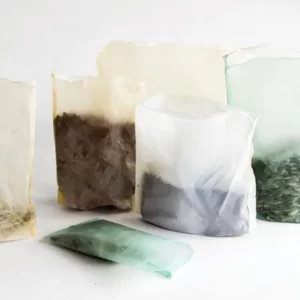Many people may wonder is polymer a plastic? Plastic is a subset of polymer because all plastics are polymers but not all polymers are plastic. We will help you clarify these two items.
In daily life, polymers and plastics are used for a variety of things. Plastics and polymers are used in the manufacture of many common household items.
Today, we will compare the two clearly, give some examples of how plastics and polymers are used in daily life, and list the advantages and disadvantages of each.
Table of Contents
What Are Polymers?
When tiny molecules, also referred to as monomers, combine chemically to form a larger network of linked molecules, polymers are produced. Polymers can be either natural or synthetic. The term is derived from the Greek prefix “poly-,” which means “many,” and the suffix “-mer,” which means “parts.”
Each polymer builds a network of repeating units, which is what distinguishes these networks from others. Natural rubber, for instance, contains isoprene as a repeating unit in its chemical composition. When isoprene is converted into natural rubber, you can see repeating units of it in the image below.
Pros
- Cheap to make
- Versatile
- Sometimes recyclable
Cons
- Made from oil
- Gives off toxic fumes when burned
- Types that can’t be recycled increase recycling expenses
What is Polymer Plastic Made Of?
Petroleum hydrocarbons are the source of the most well-known plastic polymers, such as polyester (PS), epoxy, and polypropylene (PP), PE, and PS. These materials are employed in a wide variety of applications.
They do, however, present a recycling and disposal problem at the end of their useful lives because they are difficult to degrade.

A lot of effort is being put into creating biocomposites, also referred to as green composites, which are composed of biodegradable polymers, including those derived from wood, and non-wood fibers (straw, bast, leaf, seed, and grass).
Polymer Characteristics
Each type of polymer has a very distinct characteristic, but here are some general attributes:
- Resistant to chemicals
- Thermal and electrical insulators
- Lightweight and strong
- Extrusion, injection molding, blow molding, and other process techniques are available.
- Petroleum based (typically but not always)
- Diverse and unique applications – plastics have changed the way we live, from medicine to automobiles to our homes
What Are Plastics? How is Plastic Made?
Plastics are a particular type of synthetic polymer with a large molecular mass and a mostly linear structure; they resemble spaghetti with long chains. The first synthetic plastic, known as Bakelite, was developed in 1909 for use in electrical and telephone components.
When synthetic polymers are formed into three-dimensional networks that do not melt after formation, those materials are referred to as thermoset polymers. Epoxy resin, which is utilized in two-part adhesives, is an example.
Pros
- Extremely versatile
- Flexible
- Durable
- Translucent (can be a suitable substitute for glass)
Cons
- Some types can’t be recycled
- Production and elimination emits chemicals harmful to environment
Is Polymer a Plastic?
Plastic is a polymer with a large molecular mass. Polymers are large molecules with the same structural unit repeating over and over again. Few differences exist between the two materials, though.
The key difference between polymer and plastic is that polymers can be either natural or synthetic whereas plastic is a synthetic polymer. Although there can be short chains as well, the majority of polymers have long polymer chains, and plastics essentially have very long polymer chains.
We can point to the materials’ degree of adaptability as another significant distinction between polymers and plastics. While most polymers are adaptable, plastics are incredibly adaptable.
Is Polymer Stronger Than Plastic?
While all polymers are not plastics, all plastics are polymers. Plastic is a polymer that is typically made from oil and has a broad range of durability. The “strength” of polymers can range from a bowling bowl to a grocery bag. It depends on which is stronger, so How do you compare two distinct things with different chemistry and how do you define strength?
Final Words on Polymer Vs. Plastic
A polymer is a large molecule. One kind of polymer is plastic. There aren’t many differences between the two materials, though. T
Plastic is a particular kind of polymer, which is the main distinction between polymer and plastic. Polymers, which are made up of smaller, uniform molecules, are linked together in a long chain to form plastics.
Read More: What Is Ocean-bound Plastic?
FAQs
Why is Plastic Called Polymer?
A polymer is made up of numerous monomers, which are repeating units. Plastics are considered polymers because, like polymers, plastics are high molecular weight compounds containing several repeating units. The basic molecules referred to as monomers are these repeating units.
Is Polymer Natural Or Artificial?
There are two types of polymers: synthetic and natural. Scientists and engineers use petroleum oil to create synthetic polymers.





